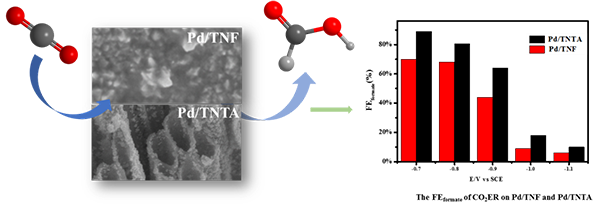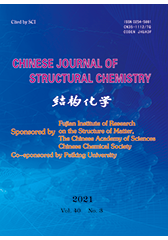Enhancing Electrochemical Reduction of CO2 to Formate by Regulating the Support Morphology
ZHAO Xiu-Hui, ZHUO De-Huang, CHEN Qing-Song* and GUO Guo-Cong*
Chin. J. Struct. Chem. 2021, 40, 376-382 DOI: 10.14102/j.cnki.0254-5861.2011-2903
March 15, 2021
CO2ER, morphology, electrochemistry, formate
ABSTRACT
Electroreduction of
CO2 to formic acid has attracted extensive attention, because it is
a promising strategy to re-utilize CO2 and reduce greenhouse gas
emissions that may favor the mitigation of energy and environment issues. Although
great efforts have been made to tune the structure and composition of catalysts
aiming to improve CO2 conversion efficiency, seldom studies have
been focused on the support regulation. In this work, ordered, porous TiO2 nanotube arrays have been used as model support to study the impact of pore structure
for CO2 electrochemical reduction. It has been revealed that Pd
supported on TiO2 nanotube arrays substrate exhibits enhanced
performance towards CO2 reduction, showing a higher formate Faradaic
efficiency of 20% over than Pd supported on TiO2 film substrate.
This study will shed new light on the design and synthesis of efficient
catalysts by tuning the morphology of support for CO2 conversion.








